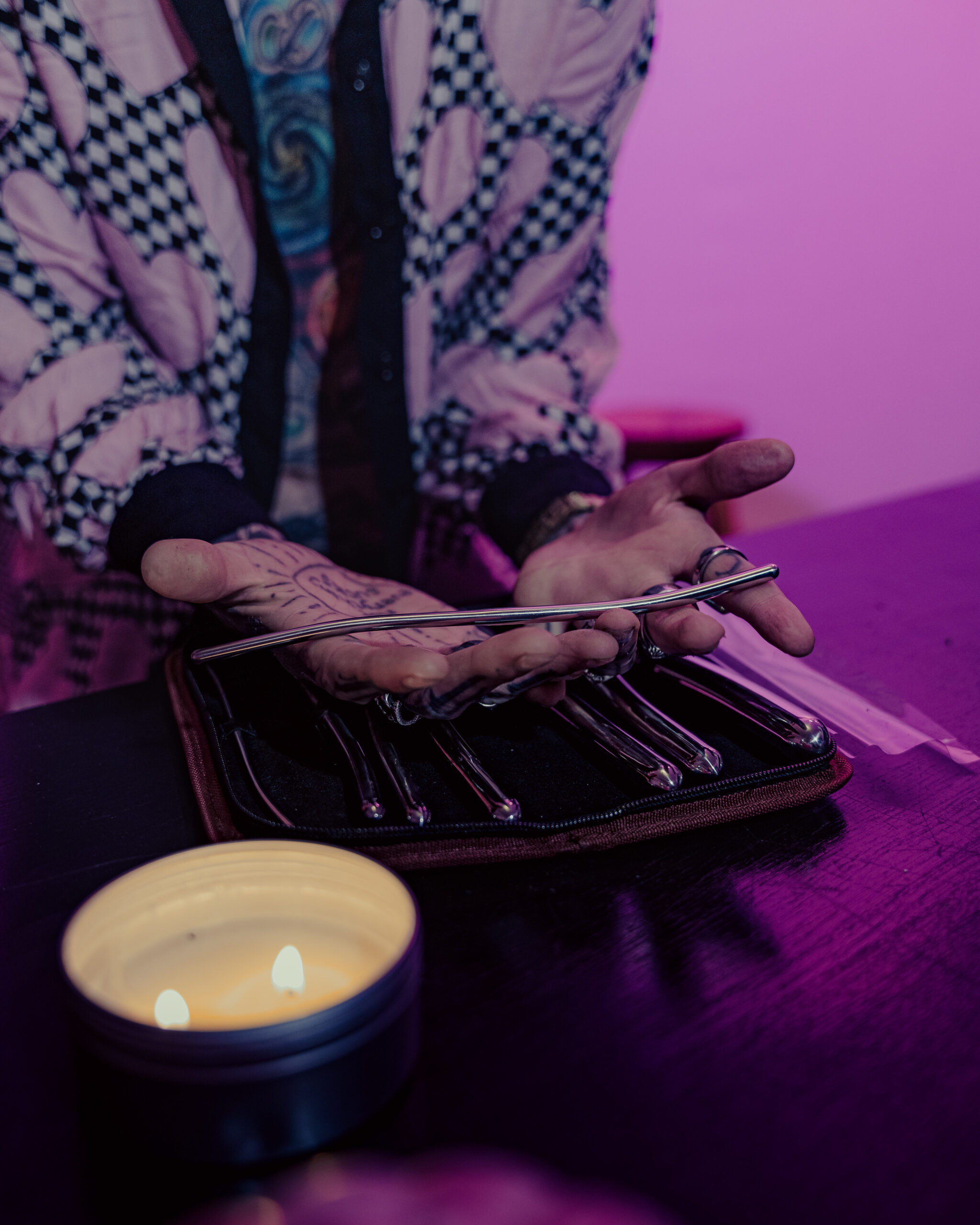Biological Factors Influencing Sexual Desire
Sexual desire is a complex interplay of biological, psychological, and social factors. Hormones play a crucial role in shaping our libido, with fluctuations in levels influencing our interest in sex. Neurochemicals like dopamine and serotonin also contribute to feelings of pleasure and arousal, impacting our desire for sexual experiences. Understanding these biological underpinnings is essential to comprehending the fluid nature of sexual desire and how it can evolve throughout life.
Hormonal Fluctuations
Hormonal fluctuations are a significant contributor to changes in sexual desire. Sex hormones like testosterone, estrogen, and progesterone directly influence libido. In women, estrogen levels peak during ovulation, often leading to increased sexual desire. Throughout the menstrual cycle, these hormone levels naturally rise and fall, which can result in variations in sexual interest. Additionally, menopause, a period marked by declining estrogen levels, can lead to a decrease in sexual desire for some women.
Neurochemical Imbalances
Neurochemical imbalances can also significantly impact sexual desire. Dopamine, often associated with pleasure and reward, plays a vital role in arousal and motivation. Low dopamine levels can result in decreased libido and difficulty experiencing sexual pleasure. Serotonin, involved in mood regulation and impulse control, also has an influence on sexual desire. An imbalance in serotonin levels, either too high or too low, can contribute to fluctuations in libido and difficulties with sexual response.
Psychological and Emotional Influences on Desire
Psychological and emotional influences exert a profound impact on desire, shaping our experiences of attraction, arousal, and intimacy. Factors like stress, anxiety, relationship dynamics, body image, and past experiences can significantly influence our libido. Mental health conditions, such as depression or anxiety disorders, can often manifest as a decline in sexual desire. Conversely, feelings of security, self-esteem, and emotional connection with a partner can foster increased libido and enhance sexual satisfaction.
Body Image and Self-Esteem
Psychological and emotional factors intricately intertwine with biological processes to shape our desires, body image, and self-esteem. Stress, anxiety, and depression can significantly dampen libido, making it difficult to experience sexual desire or arousal. Negative body image and low self-esteem often contribute to feelings of inadequacy and unattractiveness, further impacting sexual confidence and satisfaction. Conversely, a strong sense of self-worth, positive body image, and secure relationships foster emotional well-being, which in turn can enhance libido and promote healthy sexual experiences.
The media’s relentless portrayal of idealized bodies can contribute to unrealistic expectations and body dissatisfaction. This pressure to conform to unattainable standards can lead to feelings of shame, inadequacy, and low self-esteem, particularly among young people. Social comparison, a natural human tendency, is often intensified by social media, where carefully curated images create an illusion of perfection. Constant exposure to these idealized representations can negatively impact body image and contribute to disordered eating behaviors.
Cultivating a positive body image and boosting self-esteem requires conscious effort and self-compassion. Challenging negative thoughts, practicing self-acceptance, and focusing on personal strengths are essential steps in this process. Engaging in activities that promote physical and mental well-being, such as exercise, mindfulness practices, and spending time with supportive individuals, can contribute to a healthier body image and increased self-worth.
Relationship Dynamics and Communication
The interplay between psychological and emotional factors significantly influences our desires, relationship dynamics, and communication. Stress, for instance, can act as a potent libido suppressant, diverting energy away from sexual arousal and pleasure. Anxiety, often linked to performance pressures or insecurities within relationships, can also dampen desire and create obstacles in sexual intimacy.
Relationship dynamics profoundly affect sexual desire. A strong emotional connection, characterized by trust, respect, and open communication, fosters a sense of security and intimacy, which often translates into heightened libido. Conversely, unresolved conflicts, lack of communication, or feelings of emotional distance can lead to decreased desire and dissatisfaction within the relationship.
Communication plays a vital role in navigating these complexities. Open and honest conversations about desires, needs, and concerns are essential for maintaining sexual intimacy and satisfaction. Learning to express oneself vulnerably and actively listening to one’s partner’s feelings creates a space of understanding and fosters emotional connection, which can positively influence sexual desire.
Stress, Anxiety, and Depression
Psychological and emotional factors significantly influence our desires, shaping experiences of attraction, arousal, and intimacy. Stress, anxiety, relationship dynamics, body image, and past experiences all play a crucial role in how we experience sexual desire. Mental health conditions like depression or anxiety can often manifest as a decrease in libido. Conversely, feelings of security, self-esteem, and emotional connection with a partner can foster increased desire and enhance sexual satisfaction.
Stress acts as a potent libido suppressant, diverting energy away from sexual arousal and pleasure. Anxiety, often linked to performance pressures or insecurities within relationships, can also dampen desire and create obstacles in sexual intimacy. Relationship dynamics profoundly affect sexual desire. A strong emotional connection characterized by trust, respect, and open communication fosters a sense of security and intimacy, often leading to heightened libido. Conversely, unresolved conflicts, lack of communication, or feelings of emotional distance can lead to decreased desire and dissatisfaction within the relationship.
Body image and self-esteem also heavily influence sexual desire. Negative body image and low self-esteem often contribute to feelings of inadequacy and unattractiveness, further impacting sexual confidence and satisfaction. Conversely, a strong sense of self-worth and positive body image can foster emotional well-being, which in turn enhances libido and promotes healthy sexual experiences.
Past Experiences and Trauma
Past experiences and trauma can deeply impact an individual’s sexual desire and intimacy. Adverse childhood experiences, sexual abuse, or any form of traumatic event can lead to complex emotional responses that influence sexual feelings and behaviors.
Trauma can disrupt the natural hormonal and neurological processes associated with pleasure and arousal. It may create a sense of fear, shame, or vulnerability around sex, leading to avoidance or difficulty experiencing intimacy. Additionally, unresolved trauma can manifest as psychological barriers, such as anxiety, depression, or low self-esteem, further impacting sexual desire and satisfaction.
Understanding the profound impact of past experiences is crucial for individuals seeking to address challenges related to sexual desire. Therapy, particularly trauma-informed approaches, can provide a safe space to process these experiences, heal emotional wounds, and develop healthier coping mechanisms.
Addressing underlying emotional distress and fostering a sense of safety and security are essential steps in reclaiming one’s sexuality and fostering healthy intimacy.
Societal and Cultural Factors Shaping Desire
Social and cultural norms exert a powerful influence on how we understand, express, and experience desire. From the media’s portrayal of idealized bodies to societal expectations around gender roles and sexual behavior, our environment shapes our perceptions of what is considered desirable and acceptable. These influences can impact body image, self-esteem, and ultimately, our willingness to explore and embrace our sexuality.
Gender Roles and Expectations
Societal norms often dictate what is deemed “normal” when it comes to desire, leading some individuals to feel pressured to conform to rigid expectations. These expectations may vary across cultures, with some societies emphasizing traditional gender roles that limit sexual expression for certain genders or orientations. These cultural constructs can create a sense of shame or guilt for those whose desires do not align with these norms, potentially impacting their willingness to explore their sexuality openly and honestly.
The media’s pervasive influence on body image and beauty standards contributes significantly to the shaping of desire. The constant bombardment of images showcasing idealized bodies can lead individuals to compare themselves unfavorably, resulting in feelings of inadequacy and self-consciousness. These unrealistic portrayals can distort perceptions of what is considered attractive, impacting one’s own sense of desirability and potentially influencing their willingness to engage in sexual activity.
Gender roles deeply embedded within societies often dictate how individuals are expected to express their sexuality. Traditional masculine norms may emphasize a focus on conquest or performance, while feminine ideals might prioritize passivity or emotional expression. These rigid expectations can limit the full spectrum of human desire and create pressure for individuals to conform to prescribed behaviors, potentially hindering their ability to explore and embrace their authentic selves sexually.
Media Portrayals and Sexualization
Societal and cultural factors profoundly influence our understanding and experience of sexual desire. From media portrayals to gender roles, these influences shape our perceptions of attractiveness, desirability, and acceptable sexual behavior. These expectations can both empower and restrict individuals, impacting body image, self-esteem, and ultimately, their willingness to explore and express their sexuality.
The media plays a significant role in constructing and reinforcing societal ideals of beauty and desirability. The constant exposure to images depicting idealized bodies, often digitally altered, can lead to unrealistic expectations and body dissatisfaction, particularly among young people. These portrayals can contribute to feelings of inadequacy and shame, impacting self-esteem and potentially influencing one’s comfort level with their own body and sexuality.
Cultural norms and expectations surrounding gender roles also heavily influence how individuals understand and express desire. Traditional gender binaries often dictate that men are expected to be assertive and dominant in sexual encounters, while women are encouraged to be passive and receptive. These rigid roles can limit the full spectrum of human sexuality and create pressure for individuals to conform to prescribed behaviors, potentially hindering their ability to explore their desires freely.
It is crucial to recognize that these societal influences are not monolithic and vary greatly across cultures and communities. What is considered acceptable or desirable in one context may be entirely different in another. Furthermore, individual experiences within a given culture can also differ based on factors such as age, race, ethnicity, sexual orientation, and socioeconomic status.
Religious and Moral Beliefs
Societal and cultural factors significantly influence the development and expression of desire, religious beliefs, and moral values. From childhood, individuals are immersed in a web of social norms, traditions, and expectations that shape their understanding of what is considered acceptable, desirable, and taboo regarding sexuality, relationships, and personal conduct.
Religion often plays a central role in shaping moral codes and influencing attitudes towards sexuality. Different religious doctrines have varying perspectives on topics such as premarital sex, contraception, homosexuality, and marriage. These teachings can profoundly impact individuals’ beliefs about right and wrong, their views on intimacy, and the expression of their desires.
Cultural norms also exert a strong influence on sexual behavior and expectations. Societies may differ in their attitudes towards courtship rituals, gender roles within relationships, acceptable levels of physical affection, and the timing of sexual activity. These cultural blueprints can significantly affect individuals’ comfort levels with expressing their desire, exploring their sexuality, and navigating intimate relationships.

Media representations and societal messages contribute to shaping perceptions of attractiveness, desirability, and acceptable behaviors. The constant bombardment of idealized images in advertising, film, and social media can create unrealistic expectations and pressure individuals to conform to certain body types or sexual ideals. These portrayals can influence body image, self-esteem, and ultimately, how individuals perceive their own worthiness of love and intimacy.
Furthermore, historical contexts and societal shifts play a role in evolving attitudes towards sexuality. Social movements advocating for LGBTQ+ rights, advancements in reproductive technology, and changing gender roles have all contributed to a more fluid understanding of desire, relationships, and personal expression. As societies continue to evolve, our understanding of these complex issues will undoubtedly continue to change.
Understanding Fluctuations in Desire Over Time
Sexual desire is not a static force; it ebbs and flows throughout an individual’s life. Influenced by a complex interplay of biological, psychological, and social factors, understanding the fluid nature of desire is essential for fostering healthy sexual experiences and relationships.

Puberty and the Development of Sexuality
Understanding the fluidity of sexual desire is key to navigating our evolving needs and preferences throughout life. Hormones like testosterone, estrogen, and progesterone significantly influence libido, with fluctuations contributing to variations in desire. Neurochemicals like dopamine and serotonin also play a role, impacting pleasure and arousal.
Psychological and emotional factors are equally important, shaping our experiences of attraction, intimacy, and satisfaction. Stress, anxiety, relationship dynamics, body image, and past experiences can all significantly influence our desire. Mental health conditions can manifest as a decline in libido, while feelings of security, self-esteem, and emotional connection with a partner can foster increased desire.
Societal norms and cultural influences also play a role, shaping our perceptions of attractiveness, desirability, and acceptable sexual behavior. Media portrayals, religious beliefs, and gender roles all contribute to the complex tapestry of desires.
Understanding these diverse influences allows us to approach our own desires with greater self-awareness and compassion. It empowers us to communicate openly with partners, seek support when needed, and ultimately, cultivate healthy and fulfilling sexual experiences.
Menstrual Cycle and Hormonal Variations
Sexual desire is a multifaceted experience influenced by a complex interplay of biological, psychological, and social factors. Hormonal fluctuations play a significant role, with levels of testosterone, estrogen, and progesterone directly impacting libido. These hormonal variations, particularly those occurring throughout the menstrual cycle in women, contribute to natural shifts in sexual interest.
Neurochemicals also exert considerable influence on desire. Dopamine, often associated with pleasure and reward, plays a crucial role in arousal and motivation. Imbalances in dopamine levels can result in decreased libido and difficulties experiencing sexual pleasure. Serotonin, involved in mood regulation and impulse control, also has a significant impact on desire; both high and low serotonin levels can contribute to fluctuations in libido and challenges with sexual response.
Psychological and emotional factors are equally important in shaping our desires. Stress, anxiety, relationship dynamics, body image, and past experiences all play a role in how we experience sexual attraction, arousal, and intimacy. Mental health conditions like depression or anxiety disorders can often manifest as decreased libido, while feelings of security, self-esteem, and emotional connection with a partner can foster increased desire.
Societal norms and cultural influences also contribute to the complex landscape of desire. Media portrayals, religious beliefs, and gender roles all shape our perceptions of attractiveness, desirability, and acceptable sexual behavior. These external pressures can influence body image, self-esteem, and ultimately impact our comfort levels with expressing our desires.
Life Transitions and Major Life Events
The fluid nature of sexual desire can be influenced by numerous factors:
- Biological Factors: Hormonal fluctuations throughout the menstrual cycle in women, as well as overall hormonal imbalances, significantly impact libido. Neurochemicals like dopamine and serotonin also play crucial roles in pleasure, arousal, and motivation.
- Psychological Factors: Stress, anxiety, relationship dynamics, body image, past experiences, and mental health conditions can all influence sexual desire.
- Social and Cultural Factors: Societal norms, media portrayals, religious beliefs, and gender roles shape perceptions of attractiveness, desirability, and acceptable sexual behavior.
Navigating Differences in Desire Between Partners
Navigating differences in desire between partners can be a delicate yet essential aspect of maintaining a healthy and fulfilling relationship. Understanding that desire is not static and can fluctuate due to various internal and external factors is crucial.
Open Communication and Honest Conversations
Open communication is paramount when navigating differences in desire. Creating a safe and non-judgmental space for both partners to express their needs, desires, and concerns without fear of criticism or shame is essential.
Active listening plays a vital role in fostering understanding. Partners should strive to truly hear each other’s perspectives, acknowledge their feelings, and validate their experiences. It’s important to avoid interrupting, offering unsolicited advice, or dismissing the other person’s needs. Instead, focus on reflecting back what you hear to ensure understanding and demonstrate empathy.
Expressing needs and desires clearly and directly is crucial. Avoid assuming your partner knows what you want or need. Use “I” statements to express your feelings and desires without blaming or accusing your partner. For example, instead of saying “You never initiate sex,” try “I would feel more desired if we could explore intimacy more often.”
Finding mutually satisfying solutions often involves compromise and creativity. Explore different ways to connect physically and emotionally, even if it doesn’t always involve intercourse. Consider engaging in activities that foster intimacy and pleasure outside the bedroom, such as cuddling, massage, or spending quality time together.
Remember that intimacy is a multifaceted experience that encompasses physical, emotional, and intellectual connection. Cultivating these different aspects of closeness can contribute to a more fulfilling relationship even when there are differences in sexual desire.
Seeking professional guidance from a therapist or counselor specializing in couples therapy can be invaluable. A neutral third party can provide tools and strategies for effective communication, conflict resolution, and understanding the underlying issues contributing to desire discrepancies.
Empathy and Understanding Different Perspectives
Navigating differences in desire between partners is a common challenge in relationships. It’s important to remember that desire is fluid and influenced by many factors, both internal and external.

- Understanding Individual Needs: The first step is recognizing that each partner may have unique desires and needs. Some individuals experience higher levels of libido at certain times in their lives, while others may have fluctuating desires. It’s essential to create a space where both partners feel comfortable expressing their desires without judgment or pressure.
- Open Communication: Honest and open communication is crucial. Partners should be able to discuss their feelings, needs, and concerns about desire without fear of criticism or shame. Active listening is key—making sure you fully understand your partner’s perspective and validate their feelings.
- Exploring Underlying Causes: Sometimes, differences in desire can stem from underlying issues such as stress, anxiety, relationship problems, or medical conditions. Identifying these underlying causes can help couples address the root Stand Seven of the problem more effectively.
- Finding Creative Solutions: It’s important to remember that intimacy isn’t solely defined by sexual intercourse. Exploring other ways to connect physically and emotionally can strengthen the bond between partners. This might include cuddling, massage, spending quality time together, or engaging in shared activities that foster a sense of closeness.
- Seeking Professional Help: If couples are struggling to navigate differences in desire on their own, seeking professional help from a therapist or counselor can be incredibly beneficial. A therapist can provide guidance, support, and tools for improving communication, understanding each other’s needs, and finding mutually satisfying solutions.
Remember, maintaining healthy intimacy requires ongoing effort, understanding, and willingness to adapt. By prioritizing open communication, empathy, and a willingness to explore different approaches, couples can navigate differences in desire and build a fulfilling and loving relationship.
Finding Healthy Ways to Express Needs and Desires
Sexual desire is a complex and individual experience influenced by a wide range of factors. Understanding the fluidity of desire and its many influences is key to fostering healthy sexual experiences and relationships.
Biological factors, such as hormonal fluctuations and neurochemical imbalances, play a significant role in shaping libido. Psychological factors, including stress, anxiety, self-esteem, relationship dynamics, and past experiences, also exert considerable influence on how we experience attraction and intimacy. Social and cultural norms, media portrayals, religious beliefs, and gender roles further contribute to the intricate tapestry of desire.
When navigating differences in desire between partners, open and honest communication is paramount. Creating a safe space for both individuals to express their needs, desires, and concerns without judgment is crucial. Active listening, empathy, and a willingness to understand each other’s perspectives are essential for building trust and fostering intimacy.
Remember that intimacy encompasses more than just physical connection. Cultivating emotional closeness through shared activities, meaningful conversations, and acts of affection can strengthen the bond between partners even when there are differences in sexual desire.
Don’t be afraid to seek professional guidance from a therapist or counselor specializing in couples therapy. A neutral third party can offer valuable tools and strategies for navigating these challenges and fostering a fulfilling and loving relationship.
Seeking Professional Help for Concerns about Sexual Desire
Seeking professional help for concerns about sexual desire is a sign of strength and self-awareness. A therapist can provide a safe and confidential space to explore the complexities of your experiences, identify underlying issues, and develop healthy coping mechanisms.
When to Consider Therapy or Counseling
When to Consider Therapy or Counseling
Seeking professional guidance from a therapist or counselor specializing in sexual health or relationships is recommended when:
- Experiencing Significant Distress: If concerns about your sexual desire are causing you significant distress, anxiety, shame, or relationship problems, therapy can provide support and strategies for managing these emotions.
- Desire Discrepancies with a Partner: When differences in sexual desire between partners create conflict or dissatisfaction, a therapist can help facilitate communication, explore underlying issues, and find mutually satisfying solutions.
- Impacting Overall Well-being: If concerns about sexual desire are negatively impacting your overall well-being, self-esteem, or relationships, therapy can provide valuable insights and tools for addressing these challenges.
- Underlying Medical or Psychological Conditions: If you suspect that medical conditions (like thyroid disorders, hormonal imbalances, or medications) or psychological factors (such as depression, anxiety, or trauma) may be contributing to changes in your desire, a therapist can help rule out these possibilities and provide appropriate referrals for medical or mental health care.
- Desire Concerns Following Life Changes: Major life transitions, such as pregnancy, childbirth, menopause, job loss, or grief, can significantly impact sexual desire. Therapy can provide support and guidance during these periods of adjustment.
Therapy provides a safe and non-judgmental space to explore your concerns, gain insight into the complexities of your experiences, and develop personalized strategies for enhancing your sexual well-being.
Benefits of Working with a Healthcare Professional
Working with a healthcare professional can provide numerous benefits when addressing concerns about sexual desire. They can offer a confidential and supportive environment to discuss your experiences without shame or judgment. A healthcare professional can help you understand the potential underlying causes of changes in your desire, whether they be biological, psychological, relational, or social in nature. They can also provide evidence-based treatments and strategies tailored to your specific needs.
Here are some key benefits of seeking professional help:
* **Accurate Diagnosis:** Healthcare professionals can rule out any underlying medical conditions that may be contributing to changes in sexual desire.
* **Personalized Treatment:** Based on a comprehensive evaluation, they can develop a personalized treatment plan that might include therapy, medication, lifestyle changes, or a combination of approaches.
* **Exploration of Underlying Issues:** Therapists can help you explore emotional factors such as stress, anxiety, relationship difficulties, body image concerns, or past experiences that may be impacting your desire.
* **Improved Communication:** Therapy can provide tools and strategies for communicating your needs and desires to your partner in a healthy and effective way.
* **Increased Self-Awareness:** Through therapy, you can gain a deeper understanding of yourself, your sexual needs, and the factors influencing your desire.
Remember that seeking help is a sign of strength and self-care. It demonstrates a commitment to your well-being and a willingness to take proactive steps towards addressing concerns about sexual desire.
blooming orchid devious maids
Other Wheres Mag
- Why Does My Lip Filler Randomly Swell Up - November 11, 2025
- What Is The Difference Between Deep And Sub Q Fillers? - November 8, 2025
- What Are The Best CBD Gummy Sweets For Mood Enhancement - November 6, 2025


